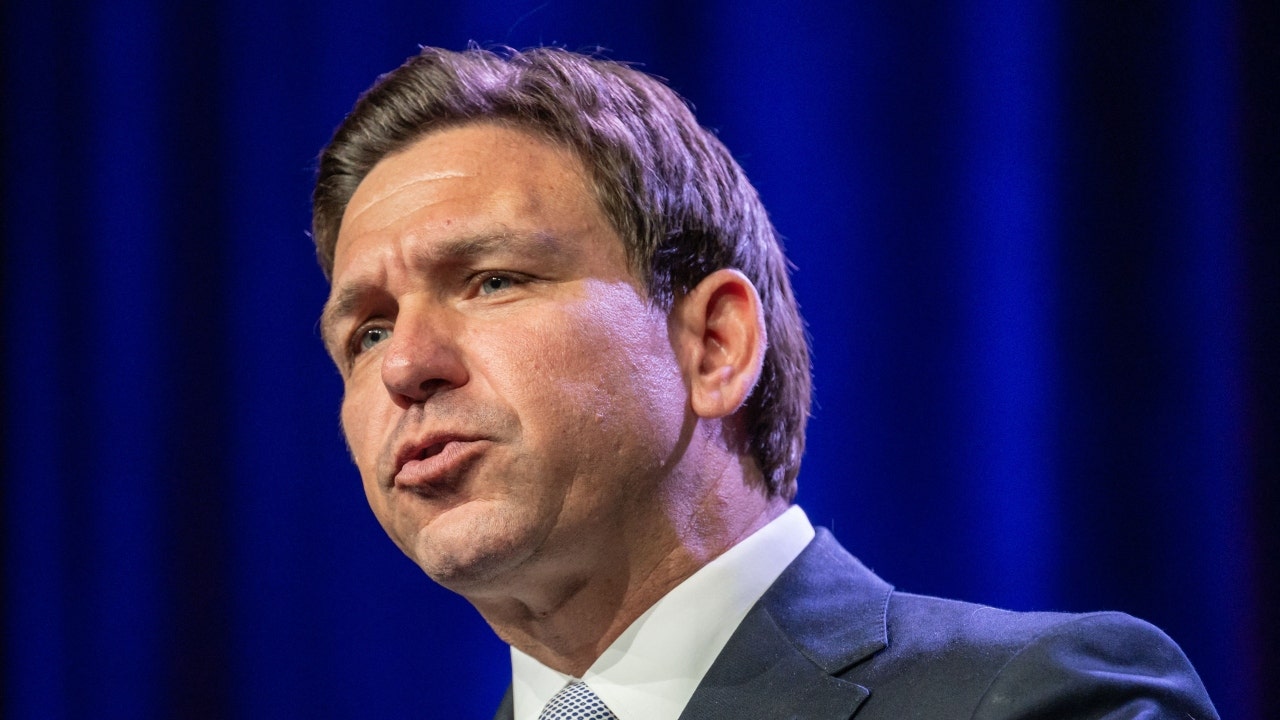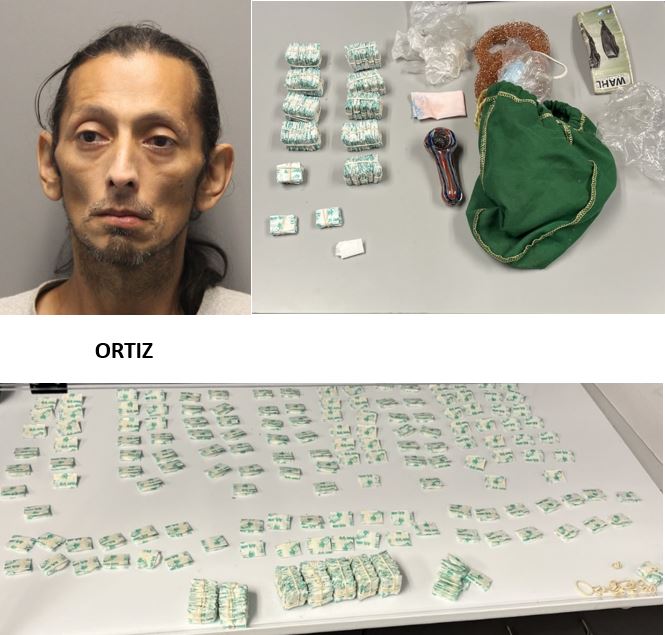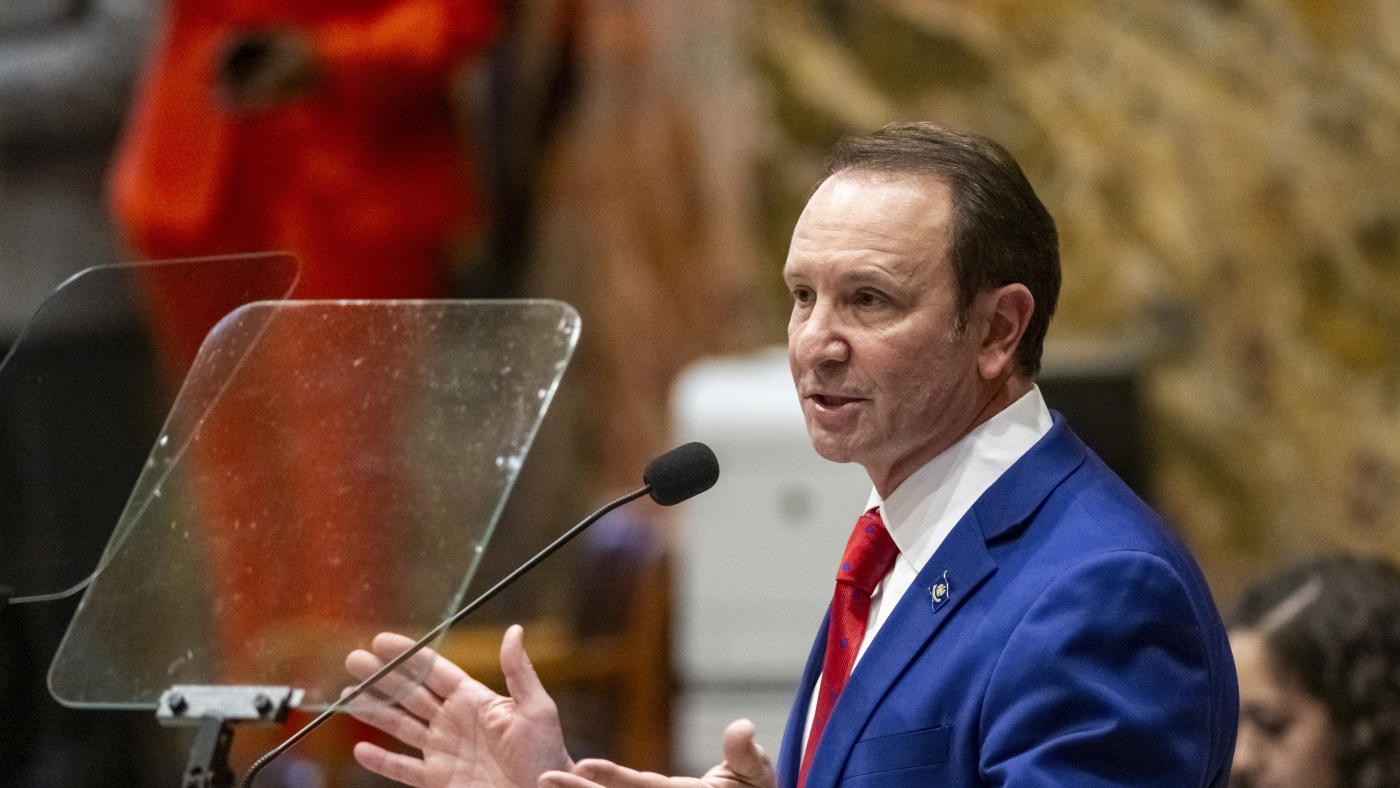Crypto
What Are Crypto Exchanges And How Do They Work

The size of the cryptocurrency market is now worth more than one trillion, witnessing a craze for digital currencies and decentralized finance. Every now and then hundreds and thousands of virtual currencies are cropping up. The curious segment of crypto investors thus need to know more about a proper platform which allows them to trade swiftly in various digital assets.
Just like traditional stock and commodities exchanges, cryptocurrency exchanges are also kinds of platforms that facilitate its participants to trade in different kinds of cryptocurrencies.
Especially after the fallout of leading crypto exchanges of the world, FTX and now the Binance-SEC saga, there is a high level of curiosity to understand more about these exchanges.
To help, Forbes Advisor India has prepared a detailed guide on cryptocurrency exchanges, how they function, their types, pros and cons and most importantly listed all the red flags to watch out that a cryptocurrency exchange might possess for a potential customer.
Table of Contents
Show more
Show less
Meaning of A Cryptocurrency Exchange
A cryptocurrency exchange works similarly like stock exchanges which helps the investors to buy and sell in digital currencies such as Bitcoin, Ethereum or Tether. These platforms work on digital marketplace such as mobile apps or via desktop functions similarly like e-brokerages. They also provide an array of trading and investing tools to its users.
The crypto exchanges also provide trading of various cryptocurrency such as margin or lending trading, and future and options trading.
To provide their users with these countless offerings, the crypto exchanges charge some type of fee for your transactions which can be either based on the volume of your transaction or dependent upon which kind of trade you carried out. Before crypto exchanges, investors were only able to receive crypto via mining or by organizing transactions in various online and offline forums. But now, there are hundreds of cryptocurrency exchanges operating worldwide and offering various digital currencies with varying levels of security and fees structure.
Unlike traditional stock or commodity markets, where fees have been reduced in the last few years, crypto trading generally costs more.
Note: The ideal cryptocurrency exchange will make it easy for you to trade the currencies you want with truncated fees structure and reliable security features.
How Does A Cryptocurrency Exchange Functions?
Cryptocurrency exchanges, whether centralized and decentralized, are very new as a concept. They work on the basis to provide a match for buyers and sellers. When you set up an account with any of the crypto exchange, it facilitates you to buy and sell cryptocurrencies such as Bitcoin (BTC), Ethereum (ETH), Litecoin (LTC), Cardano (ADA) or Dogecoin (DOGE), and so on.
So, if anyone wants to place trades on crypto exchanges in India, they have to first register and complete the Know-Your-Customer (KYC) process. Once the user’s account is opened and verified, then they can transfer funds in the form of fiat currencies such as INR or digital currency onto the platform, which can be further used to make purchases.
So, if suppose you want to buy your first cryptocurrency via crypto exchange, here are the basic steps:
Step 1: Explore and choose a trustworthy and sound cryptocurrency exchange.
Step 2: Register with the exchange and open an account with them.
Step 3: Fund your account or crypto wallet either by depositing fiat or digital currencies.
Step 4: Now, select the cryptocurrency you want to buy and how much. For instance, if you wish to buy Bitcoin worth INR 10,000.
Step 5: Follow the necessary steps to initiate and complete a transaction.
Step 6: Check your account to verify that the transaction was a success.
Pros and Cons of Cryptocurrency Exchanges
Pros
- Very easy and hassle-free for users to buy cryptocurrencies.
- Exchanges allow you to place a legitimate trade on cryptocurrencies.
- There are many exchanges which offer their users with tax forms, making it easier to compute crypto taxes.
Cons
- Too much vulnerable to hacks and cyber theft.
- If the exchanges go bankrupt, users will not be able to access their funds or place trades.
- In most of the exchanges, users do not have the right to hold their private keys.
Types of Cryptocurrency Exchange
Centralized Exchanges
These kinds of exchanges work on the same lines of conventional equity stock exchanges or full -time brokerages. As the name says, the centralized exchange is regulated by a single authority which keeps an eye on every account and maintains full charge on each and every transaction.
Pros
- Great liquidity.
- Recovery of the user’s fund is possible.
- Able to handle transactions faster.
Cons
- Easier for hackers as CEX stores valuable user data across centralized servers.
- Have been charged with manipulating trading volume in the past.
Decentralized Exchanges or DEX
These kinds of exchanges are completely opposite of centralized exchanges. They run on the basis of distributed ledger infrastructure. These kinds of exchanges allow trading of cryptocurrencies without any authority.
Decentralized exchanges are fully autonomous where the users control their keys and their digital assets. Moreover, the users are not required to go through any kind of KYC formalities and thus have more privacy in securing their transactions.
Pros
- Full custody of their funds.
- More security and privacy.
- Distributed hosting reduces the risk of cyber attacks.
Cons
Hybrid Exchanges
A hybrid exchange is a mix of both CEX or DEX exchanges and has been designed to offer the best of both the worlds. They assist in providing the ease and convenience of the centralized exchange and also offer the benefit of privacy and security of a decentralized exchange.
Pros
- Provides the strengths of both DEX and CEX.
- Provides a high level of privacy.
Cons
- Relatively a very new concept.
- Do not have much volume till date.
To know more about the prominent exchanges of India, Forbes Advisor India has prepared a list of the best of the exchanges operating in India. Read our article on Best Cryptocurrency Exchanges In India to gather more information on specific exchanges and their key features.
Things to Check Before Selecting a Crypto Exchange
Always be cautious while selecting the crypto exchange which might put you in trouble, if not chosen wisely. A cryptocurrency exchange sounds simple — as it is just a platform where you can buy and sell different types of crypto. But, as most of the things in the cryptoverse are complex, exchanges can be complicated too and may require a lot more scrutiny than traditional stock as it is largely unregulated.
Here are few of the important points which could save you big time from a fraud or cryptocurrency exchange which might poses a significant amount of risk:
Check whether a particular firm is registered as a securities broker.
Choose the exchange which is incorporated or registered in India. This could make it very helpful if any concerned authorities investigate the exchange.
The exchange must notify or inform you what it does with your funds. So, if the exchange is manipulating or commingling your funds, it could be very difficult or impossible for you to recover your funds if the exchange enters bankruptcy. For instance, bad lending practices led to the demise of FTX and proved very risky for its users across the globe.
The exchange should have a legit presence on social media channels such as LinkedIn, Twitter or Facebook.
Always check the customer support system of the cryptocurrency exchange, before selecting the exchange, try to contact them via toll free numbers or via chat system.
Before selecting the exchange, also locate the exchange’s wallet. A fully operational exchange generally discloses their cryptocurrency reserves. But, if an exchange is trying to keep this information hidden, then it could be a sign of undercapitalized or illegitimate exchange.
How is a Cryptocurrency Exchange Different from a Cryptocurreny Wallet?
People often get confused between crypto exchange and crypto wallet. As they both are used extensively for the safe storage of cryptocurrencies — although how a crypto wallet functions is a little bit more complex. Here’s a quick rundown of some of the notable differences between crypto exchanges and crypto wallets:
How to Select the Proper Exchange for Your Investing Needs?
Do Proper Research: When it comes to selecting the best crypto exchange then its reputation and past records really matters a lot. Thus, it is very important for the users to do proper research about the exchange, its founders, legitimacy, security issues, and how exchange addresses any customers related issues.
High Level of Security: The cryptocurrency exchange should have proper and high level of security features. As these exchanges are not regulated, therefore only tight security features are a must.
Always Check Pairs and Fees: If you are satisfied with the exchange’s background and its security features, then the next important thing to consider is the pairs and fees, as it might affect your daily investment needs. Fees and pairs vary from exchange to exchange and totally depend on your on-investment requirements.
Withdrawal and Deposit Options: Select that exchange which offers multiple and convenient ways to withdraw and deposit your money such as bank transfers, credit and debit card payments, peer-to-peer lending etc.
Bottom Line
The most easy and hassle-free way for buying and selling of cryptocurrencies is via cryptocurrency exchanges. While it may sound very convenient there are more than 200 exchanges, which are operating across the globe, and choosing the best one that suit your needs could be daunting.
So, when you are in the process of deciding which crypto exchange to choose, kindly keep in mind all the above-mentioned points such as its types, pairs, fees structures. location and other guidelines before you begin placing transactions in digital currencies.
Frequently Asked Questions (FAQs)
Can I start trading in cryptocurrency via stock exchanges too?
No. The stock exchanges in India only carry out the trades for equities, commodities and currencies. They do not deal in cryptocurrencies as this falls under the purview of the “unregulated” sector. One can do trades in cryptocurrencies only via crypto exchanges or crypto e-brokerage firms.
Is it allowed to trade in crypto exchanges in India?
Yes. As of now there are no restrictions on trading or investing via crypto exchanges in India. However, this segment is not regulated by any central authority, so trading in cryptocurrencies is merely done at the risk of the investors.
Do crypto exchanges charge fees from their users?
Yes. generally all kinds of crypto exchanges charge a fee on placing the trades with them. The typical kind of costs include fund transfer fees to/from the user’s bank account, maker or taker fees, and certain transaction fees based on trading volume.
Can Cryptocurrency be converted into fiat currencies via exchanges?
Absolutely. The user can make use of the cryptocurrency exchanges to convert their cryptocurrency to fiat currencies, or convert fiat currencies to cryptocurrency, at any given point of time.
What kind of documents do I need to open an account with crypto exchange?
The exchange account opening form might ask the user for the basic details such as name, gender, address, email id, date of birth and a copy of photograph, if needed. Applicants might be required to furnish details of their PAN card, Aadhar card or any other such document for KYC formalities.

Crypto
Mexico Ranks Third in Latin America for Cryptocurrency Ownership: Blockchain Trends

- Currently, 3.1 million Mexicans own cryptocurrencies such as bitcoin, ethereum, solana, dogecoin, or binance.
- Coinbase aims to enter the Mexican market with cost-effective cryptocurrency withdrawal services, aiming for a 30% reduction.
The adoption of cryptocurrencies among Mexicans has seen substantial growth, with 3.1 million individuals owning digital assets such as bitcoin, ethereum, solana, dogecoin, or binance. This accounts for 2.5% of Mexico’s population, positioning the country as the third highest in Latin America for cryptocurrency adoption, trailing behind Brazil and Argentina.
Globally, Mexico ranks 16th in cryptocurrency adoption, according to the Chainalysis Global Crypto Adoption Index.
“Facilitate the withdrawal of cryptocurrencies and offer services up to 30% cheaper than traditional cross-border payment methods.”
Luiz Eduardo Abreu Hadad, Sherlock Communications Researcher and Blockchain Advisor, wrote:
“It seems that Latin America is ready to ride the crypto wave.”
Remittances have played a pivotal role in driving this adoption. In 2023, remittances sent to Mexico totaled $63.313 billion, marking a significant increase and fueling a 60% growth in cryptocurrency exchanges to local currency transactions through platforms like Bitso Business.
Continuing with the previous Crypto News Flash report, the interest in the Mexican market among crypto exchanges continues to rise. Coinbase, for instance, aims to enter the Mexican market by offering cryptocurrency withdrawal services that are up to 30% cheaper than traditional cross-border payment methods.
Luiz Eduardo Abreu Hadad, a researcher and blockchain advisor at Sherlock Communications, noted that “it seems Latin America is ready to ride the crypto wave,” reflecting the region’s growing enthusiasm for digital assets.
Brazil leads Latin America in cryptocurrency adoption, ranking 9th globally, driven by the approval of exchange-traded funds (ETFs) for digital assets and increased acceptance of cryptocurrencies by banks.
Argentina, on the other hand, ranks second in Latin America and 15th globally for cryptocurrency adoption, with 5 million citizens owning some form of digital currency. High inflation rates and stringent capital controls have spurred this adoption among the Argentine population.
In contrast, despite El Salvador’s adoption of bitcoin as legal tender, cryptocurrency adoption has declined. The country dropped from 55th place in 2022 to 95th place in 2023 in terms of public acceptance.
In a previous Crypto News Flash report, overall, the increasing adoption of cryptocurrencies in Mexico and across Latin America underscores a growing trend influenced by economic factors like remittances, inflation concerns, and regulatory developments that shape public perception and engagement with digital assets.
No spam, no lies, only insights. You can unsubscribe at any time.
Crypto
Cryptocurrency Price Today: Bitcoin Rises Above $63,000 Over The Weekend

Crypto
Cryptocurrency after the European Union’s MiCA regulation | Opinion

Disclosure: The views and opinions expressed here belong solely to the author and do not represent the views and opinions of crypto.news’ editorial.
The Markets in Crypto-Assets Regulation (MiCA) marks a significant milestone in the European Union’s journey toward regulating the rapidly evolving crypto market. Its timeline and provisions hold immense importance for both crypto businesses and investors. As we approach crucial dates, starting with the application of stablecoin provisions from June 30, 2024, and the complete application of MiCA on December 30, 2024, the crypto landscape is undergoing a transformative phase.
Over the next two years
MiCA’s staggered timelines and transitional periods, extending up to June 30, 2026, imply a period of fragmented implementation across the EU and European Economic Area (EEA). Jurisdictions such as Ireland (12 VASPs), Spain (96 VASPs), and Germany (12 VASPs) will grant a 12-month transitional period. In contrast, other jurisdictions will offer more extended periods, such as France (107 VASPs) with 18 months, while Lithuania (588 VASPs) will likely only grant five months. This transitional phase will prompt market consolidation as not all existing service providers will secure MiCA licenses. Many will look to capitalize on this interim period before winding down operations.
The race among EU/EEA jurisdictions to become the primary hub for crypto activities intensifies, with jurisdictions like France, Malta, and Ireland competing to take the top spot. However, regulator readiness and compliance for crypto-asset businesses pose significant challenges. Regulators are facing an adjustment period to upskill their staff to process MiCA applications, particularly in jurisdictions with high applicant volumes. The complexity of various business models, encompassing numerous products unfamiliar to regulators, exacerbates this challenge. The general lack of expertise to authorize and supervise this sector requires substantial training efforts.
Challenges for crypto businesses
MiCA, coupled with the vast array of related Level-2 measures (many of which still need to be finalized) and other applicable EU instruments such as the anti-money laundering laws, the Digital Operational Resilience Act (DORA), and the Electronic Money Directive (EMD), create a complex regulatory framework. Understanding what provisions apply to each entity type and what documentation needs to be implemented will be challenging for some.
The delisting of crypto-assets, particularly stablecoins, from EU exchanges due to their issuers’ failure to obtain their licenses on time will pose considerable hurdles and limit the availability of certain assets for consumers.
Adapting to MiCA will strain many entities and require substantial investments in technological infrastructure. The Travel Rule, a requirement in which information must be shared between VASPs with each crypto transaction, also comes into effect at the same time as MiCA. The Travel Rule mandates that CASPs transfer a substantial amount of information about the originator. This includes their address, personal identification number, and customer identification number. In rare cases, it may even require the disclosure of the originator’s date and place of birth. This adds another layer of complexity, further highlighting the need for harmonization within the EU and solutions to comply with the Travel Rule that are interoperable and enable secure data sharing while preserving user privacy.
Key crypto market outcomes
Despite the challenges, MiCA instils confidence in EU entities due to heightened regulatory oversight, the promotion of investor protection and attracting mainstream institutional participation. Enhanced consumer protection measures mitigate risks such as fraud and hacking, fostering trust among retail clients.
MiCA’s reporting requirements will result in regulators across the EU possessing more data, empowering them to monitor market activities effectively. The ability to freely passport activities across the EU will facilitate cross-border operations and reduce regulatory fragmentation while expanding market reach.
MiCA’s prescriptive nature and all-encompassing regime set a precedent for global regulatory frameworks. Other jurisdictions are already observing and may replicate some of MiCA’s provisions and its approach, contributing to regulatory harmonization on a worldwide scale. However, concerns remain as to whether it will stifle growth and innovation and whether businesses will look to relocate to more permissive and less restrictive jurisdictions.
Steps after MiCA
MiCA’s gaps in regulating emerging areas like true defi (the provision of financial services or issuance of financial assets without identifiable intermediaries and with no single point of failure), lending, and NFTs necessitate ongoing policy discussions and further regulatory measures. Reports on these aspects will inform future regulatory developments, potentially leading to a second iteration of MiCA in at least the next four to five years or supplementary measures.
MiCA signals a new era of regulation in the crypto market, aiming to balance innovation with investor protection and market integrity. While challenges persist, MiCA lays the groundwork for a more transparent, secure, and inclusive crypto framework in the EU and beyond. As the crypto landscape continues to evolve, regulatory regimes must adapt to emerging trends and technologies, ensuring sustainable growth and fostering investor confidence.
-

 News1 week ago
News1 week agoTracking a Single Day at the National Domestic Violence Hotline
-

 News1 week ago
News1 week agoA Florida family is suing NASA after a piece of space debris crashed through their home
-

 World1 week ago
World1 week agoIsrael accepts bilateral meeting with EU, but with conditions
-

 Politics1 week ago
Politics1 week agoSupreme Court upholds federal gun ban for those under domestic violence restraining orders
-

 World1 week ago
World1 week agoIsrael will be the ‘ultimate loser’ in war with Hezbollah, Iran says
-

 World1 week ago
World1 week agoNew Caledonia independence activists sent to France for detention
-

 News1 week ago
News1 week agoArkansas police confirm 4th victim died in grocery store shooting
-

 Politics1 week ago
Politics1 week agoDeSantis signs bill allowing residents to kill bears, vetoes bill that fines slow left lane drivers















